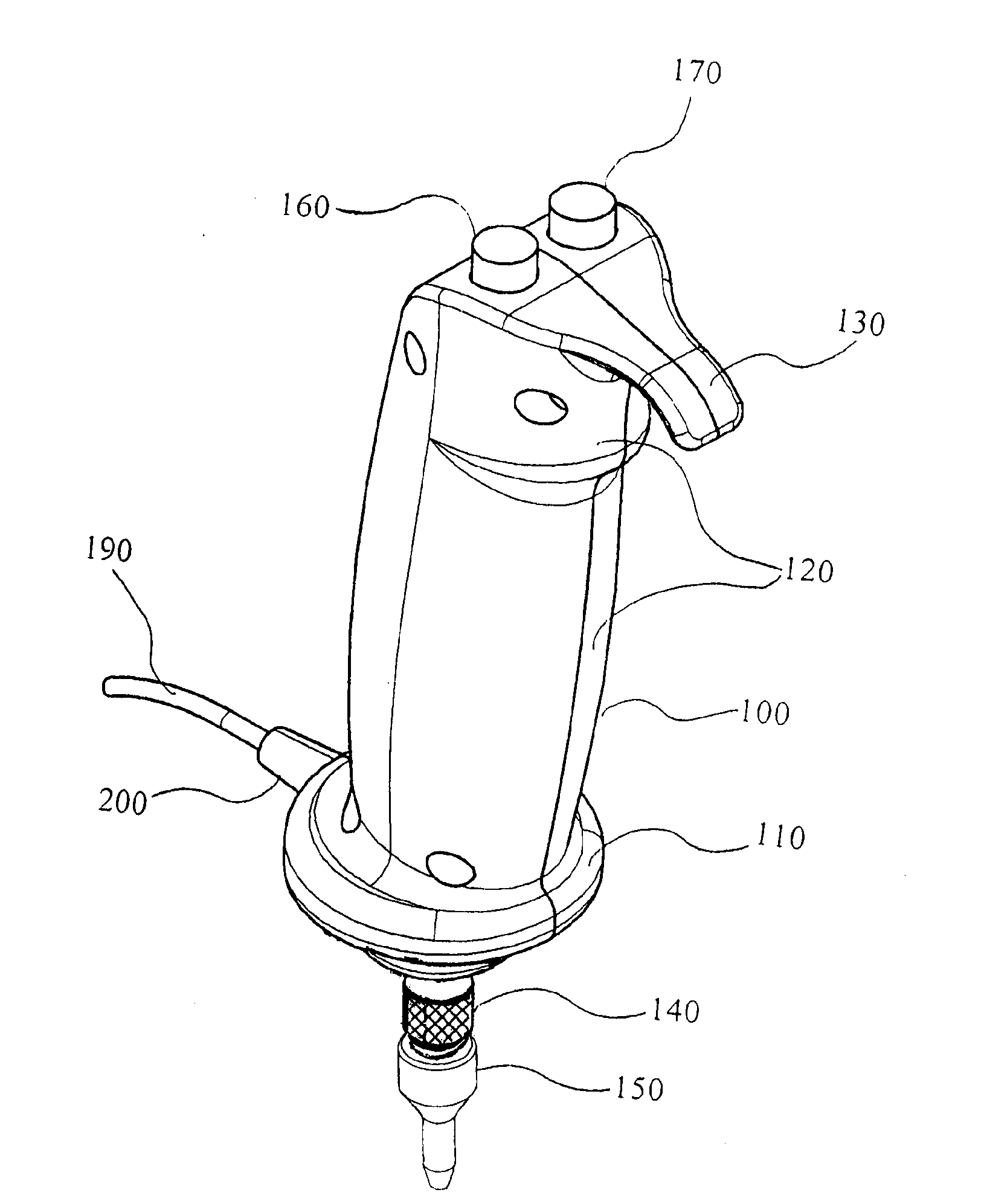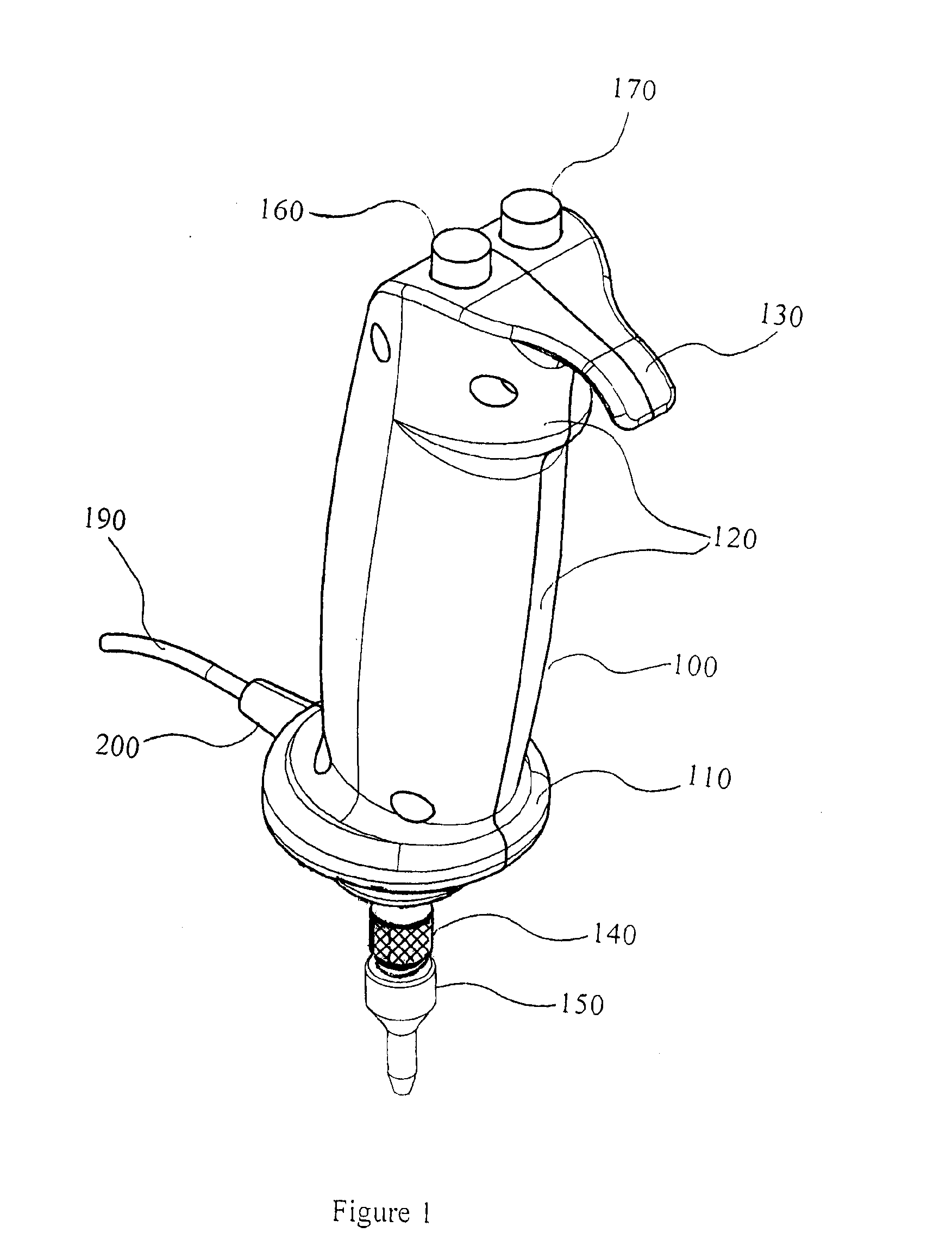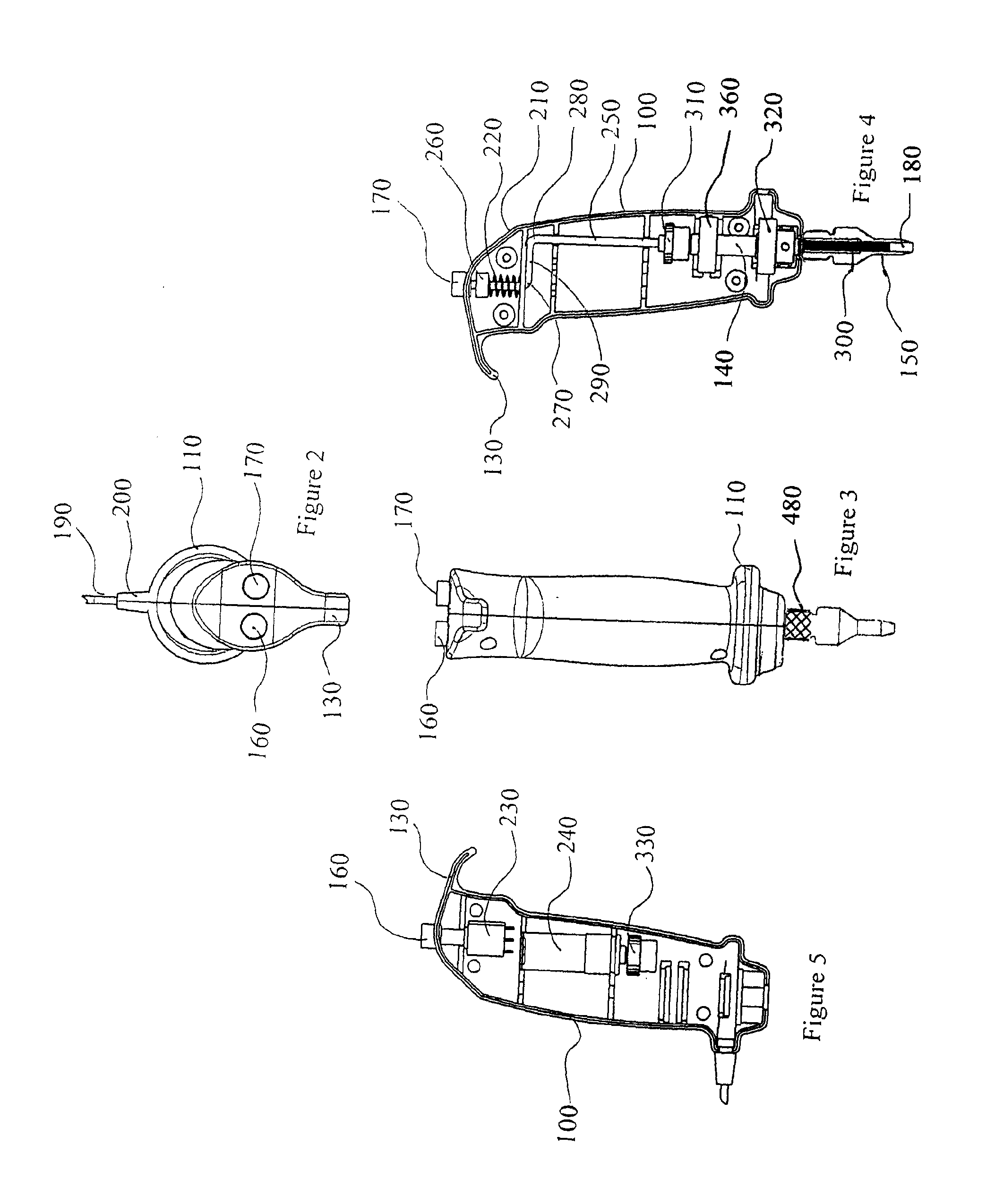Motor driven rotational sampling apparatus with removable cutting tools for material collection
a sampling apparatus and cutting tool technology, applied in metal working apparatus, medical science, surgery, etc., can solve the problems of creating residual artefact products, and not being able to sample at all locations on the surface of all sizes of source materials using this punch
- Summary
- Abstract
- Description
- Claims
- Application Information
AI Technical Summary
Benefits of technology
Problems solved by technology
Method used
Image
Examples
Embodiment Construction
[0058]Referring to FIG. 1, a preferred embodiment of a sample collection device constructed in accordance with the principles of the invention is shown. A handle feature 100 blends to a horizontal flange feature 110 at the bottom as a hollow clamshell casing. A drive shaft 140 with its lower end below the flange 110 holds the threaded removable cutting tool 150. To facilitate ease of holding the unit, finger contours 120 are included on the front of the casing. To eliminate slipping of the hollow clamshell handle 100 through the hand a horizontal extension 130 has also been added as a blended feature above the finger contours 120. The motor actuation button 160 and the ejection button 170 are positioned at the top of the hollow clamshell casing 100. The power supply cord 190 extends from a cord strain release 200 which extends from the rim of the flange 110.
[0059]FIGS. 2 and 3 repeat the preferred embodiments described in FIG. 1 but are an overhead view and a projected front view of...
PUM
| Property | Measurement | Unit |
|---|---|---|
| pressure | aaaaa | aaaaa |
| distance | aaaaa | aaaaa |
| sizes | aaaaa | aaaaa |
Abstract
Description
Claims
Application Information
 Login to View More
Login to View More - R&D
- Intellectual Property
- Life Sciences
- Materials
- Tech Scout
- Unparalleled Data Quality
- Higher Quality Content
- 60% Fewer Hallucinations
Browse by: Latest US Patents, China's latest patents, Technical Efficacy Thesaurus, Application Domain, Technology Topic, Popular Technical Reports.
© 2025 PatSnap. All rights reserved.Legal|Privacy policy|Modern Slavery Act Transparency Statement|Sitemap|About US| Contact US: help@patsnap.com



